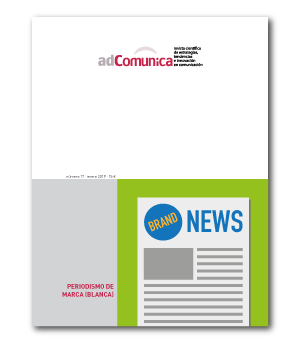Entornos digitales: formatos periodísticos para difundir cultura a través de un Media Lab
##plugins.themes.bootstrap3.article.main##
Resum
Se muestran los resultados de una primera fase de la investigación aplicada de tipo experimental y de corte transversal que tiene como objetivo la formación de comunicadores críticos de artes escénicas que promuevan cultura desde espacios de divulgación de tipo digital. La pregunta que se formula es ¿cómo y con qué estrategias de comunicación desde un Media Lab, generado en una universidad pública peruana, se contribuye con la crítica y la difusión de las artes escénicas? Los objetivos son describir cómo se elabora una metodología para la difusión de las artes escénicas y explicar las estrategias de comunicación para desarrollarla dentro de un Media Lab. La hipótesis que guía el trabajo es que la creación de un Club de Jóvenes Críticos, como espacio de formación y de desarrollo de competencias en el uso de formatos periodísticos, puede ofrecer soluciones a una problemática como es la poca comunicación en entornos digitales sobre los fenómenos y expresiones de la cultura en el Perú. Los resultados revelan que, a través de la generación de espacios para actividades extra curriculares en la universidad, como un club de jóvenes, se fomenta la participación y el actuar crítico de los estudiantes, lo cual se concretiza con la producción de contenidos periodísticos y su difusión a través de plataformas digitales.
Descàrregues
##plugins.themes.bootstrap3.article.details##
1. Política propuesta para Revistas que ofrecen Acceso Abierto
Los autores que publican en esta revista están de acuerdo con los siguientes términos:
- Los autores conservan los derechos de autor y garantizan a la revista el derecho de ser la primera publicación del trabajo al igual que licenciado bajo la licencia CC BY-SA, que permite a otros compartir el trabajo con un reconocimiento de la autoría del trabajo y la publicación inicial en esta revista.
- Los autores pueden establecer por separado acuerdos adicionales para la distribución no exclusiva de la versión de la obra publicada en la revista (por ejemplo, situarlo en un repositorio institucional o publicarlo en un libro), con un reconocimiento de su publicación inicial en esta revista.


